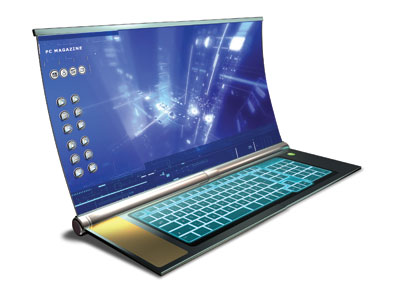How Does an LCD TV Work?
 In recent years, televisions and electronic devices have gotten smaller and more energy efficient. This trend has much to do with the LCD (liquid crystal display) technology that powers the pictures on the screens of televisions and other electronic equipment. Not so long ago, a 32 inch television could be several tens of kilograms in weight and very thick, taking up a lot of room. Now, the same 32 inch LCD TV weighs a mere fraction of its older counterpart and can be in less than 2 centimetres thin. LCD screens are everywhere in the modern world such as in an LCD TV, DVD player, GPS systems, mobile phones, media players, and in almost any other electronic device that has a display screen. But how do LCD’s actually work?
In recent years, televisions and electronic devices have gotten smaller and more energy efficient. This trend has much to do with the LCD (liquid crystal display) technology that powers the pictures on the screens of televisions and other electronic equipment. Not so long ago, a 32 inch television could be several tens of kilograms in weight and very thick, taking up a lot of room. Now, the same 32 inch LCD TV weighs a mere fraction of its older counterpart and can be in less than 2 centimetres thin. LCD screens are everywhere in the modern world such as in an LCD TV, DVD player, GPS systems, mobile phones, media players, and in almost any other electronic device that has a display screen. But how do LCD’s actually work?
At the heart of LCD technology are liquid crystals. Although the term suggests that the crystals are liquid in form, this is a bit of a misnomer. Instead, liquid crystals are really groups of solid crystals that display the properties of liquids when grouped together in large numbers. Sand is a similar substance. Each grain of sand is solid, but when a large amount of sand is placed into a bucket, it can flow and be poured like water. These liquid crystals also have the ability to polarize light. Polarization is the ability of a substance to filter out light. When exposed to an electrical current or source of radiation, the liquid crystals inside of an LCD display filter out various amounts of light to produce the difference hues and pictures on the TV screen.
In an LCD television, the liquid crystals are housed between two sheets of material, which can conduct electricity. There are various forms of liquid crystals available, but most LCD televisions use twisted nematic crystals, which are liquid crystals that have a structure that is twisted in shape. These crystals and their twisting, which affects the amount of light that is filtered is controlled by an electromagnetic current that is applied over one of the plates holding in the liquid crystal. This plate has very small grooves in it that can influence the orientation of the crystals and thus how and when they polarize light. On the other side of the crystals sits another surface that has polarization filters oriented at 90 degrees to the surface with the grooves. When light passes from the backlight through the layer with the grid, it will then pass through the liquid crystal layer and twist to various degrees. Depending on the amount of twisting that takes place, the amount of polarization will change.
Each LCD screen will have millions of tiny holes that the light can shine through, called pixels. Furthermore, each pixel is divided into three smaller pixels called subpixels, which are coloured red, green, and blue respectively. When light is allowed to pass through each pixel, different pixels will turn on. The light from the red, green, and blue pixels blend with each other at different intensities to create the illusion of millions of colours.
